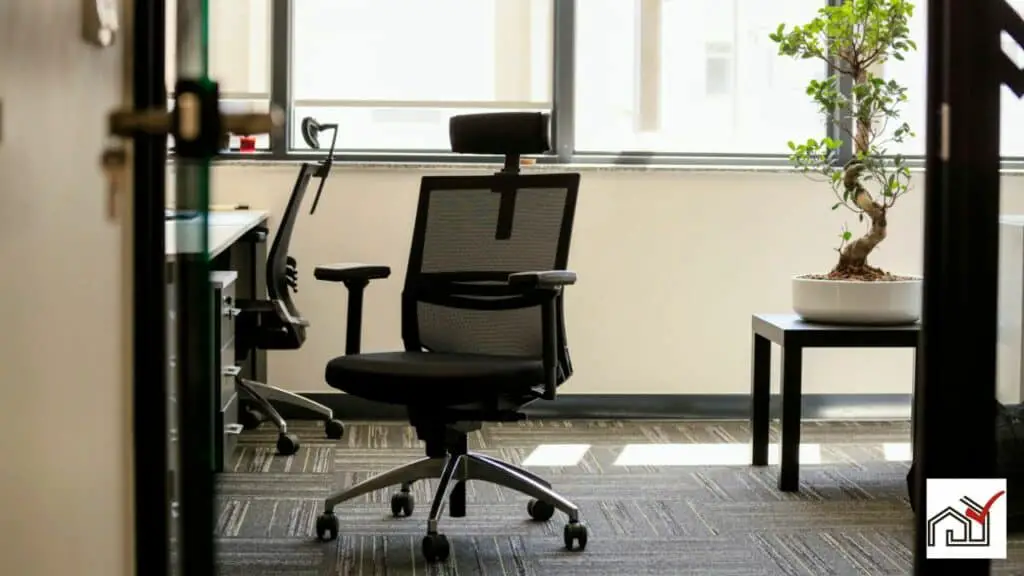A console table can be used as a desk. It is slim and fits well against walls, making it suitable for small spaces. As a desk, it can hold a laptop, notepad, and pens.
It is important to check that the table is the right height and stable enough to work at comfortably. The right chair and lighting are also necessary to work effectively.
With the correct setup, a console table works well as a desk.
Assessing Console Table Dimensions
Check the size of a console table to make sure it's big enough for use as a desk. It needs enough space for a computer, writing area, and desk items. A console table should be 28-32 inches tall, similar to a desk, to allow for comfortable seating and good posture. The depth should be 16-18 inches to be spacious yet fit well in the intended space.
Choose a console table without lower shelves or bars for more legroom and comfort. This also makes it work better as a desk. Even a smaller console table should meet the necessary depth and height for a good desk.
Selecting the right size ensures the console table is both useful and stylish as a desk.
Evaluating Surface Stability
Before using a console table as a desk, check that it is stable and suitable for office tasks. A stable desk is essential for the safety of equipment and a comfortable workspace. Stability of the console table depends on a sturdy base to prevent wobble, appropriate height for use with a desk chair and to avoid discomfort, and sufficient depth to prevent a cramped workspace.
Lower shelves or decorative elements should not interfere with legroom or chair placement. Choose a table designed to support weight evenly for a reliable work foundation. Prioritize functionality and safety over appearance when selecting office furniture.
Considering Ergonomic Factors
When using a console table as a desk, ergonomic considerations are important to ensure comfort and avoid strain. A console table without ergonomic design can cause discomfort and musculoskeletal problems. The table height is important for comfort, allowing the user's arms to be level with the floor while typing or writing.
Console tables vary in height, but not all are appropriate for a desk. The recommended desk height is about 28 to 30 inches for most users. Verify the table height before using it as a desk. The table depth must also be sufficient to position a monitor at arm's length to prevent eye strain.
Choose a console table without lower shelves or bars that limit leg room. A tidy workspace aids focus and efficiency, and a smaller table can help keep the area organized.
If the table height is not adjustable, use an adjustable chair or a footrest to achieve a comfortable workspace. An adjustable desk is ideal, but adjustments to chair or footrest can compensate for a fixed-height table.
Identifying Appropriate Seating
Choosing the correct chair is important when using a console table as a desk to maintain proper ergonomics and comfort. The chair should support good posture, productivity, and health.
As console tables are typically not as high as standard desks, it's important to select a chair of the right height to ensure the arms can rest on the table without raising the shoulders, and eyes are level with the top third of the screen to avoid strain.
If the console table is higher, consider stools like the Leather Cooper stools from Serena & Lily, which can provide style and support. For a more relaxed seating option, consider custom slipcovers for cubes from Ikea, which can be tucked away neatly when not in use.
Choose seating that encourages an ergonomic position to reduce the chance of discomfort or injury from long work periods at the console table. Prioritize a combination of functionality and personal taste to create a suitable work environment.
Organizing Your Workspace
To effectively use a console table as a desk, there are a few key considerations:
- First, choose a console table with drawers if you need to store files and supplies. This will help keep your workspace organized and clutter-free.
- Additionally, make sure the console table is sturdy enough for everyday use. You'll want a table that can withstand the weight of your computer and any other items you may need on your desk.
- Once you have your console table set up, place your computer in the center for easy access. This will be the focal point of your workspace.
- To keep your desk organized, use simple organizers to store pens, notebooks, and other small items. This will help you stay productive and keep your workspace tidy.
- If you find that you need extra light, consider adding a desk lamp to your console table. This will provide additional lighting for tasks that require more focus.
- To save space, consider storing stools underneath your console table. This will allow you to easily pull them out when needed and tuck them away when not in use.
- Finally, when choosing a console table, avoid tables with shelves that reduce legroom and create clutter. Opt for a table with clean lines and minimalistic design to maximize your workspace.
A well-chosen and organized console table can not only enhance your productivity but also improve the overall look and feel of your space. Take the time to find the perfect console table that meets your needs and fits seamlessly into your workspace.
Lighting for Your Desk Setup
Proper lighting is crucial for a desk to ensure comfort and prevent eye strain. A console table used as a desk should have lighting that is both functional and aesthetically pleasing. Good lighting improves productivity and reduces discomfort over long periods.
Natural light is beneficial for a workspace. Placing a desk near a window offers daylight, which is welcoming and helps with the body's natural rhythm, leading to better work habits.
When natural light isn't enough, task lighting is essential. An adjustable desk lamp gives targeted light for better visibility on work tasks. Desks with cable management help keep the area tidy and allow light to spread without creating shadows that cause eye strain.
With adjustable desks, consider the light angle when seated to avoid glare on screens and shadows. In small spaces, use compact lamps that don't take up much room but still provide enough light.
The correct lighting can turn a console table into an effective desk that supports both comfort and efficiency.
Customizing for Comfort
To convert a console table into a comfortable desk, choose ergonomic chairs or adjustable stools to support good posture and provide cushioning for long work periods. Ergonomic chairs with lower back support promote an upright position, enhancing comfort. Adjustable stools save space and should match the table height. A footrest can help alleviate leg fatigue.
Console tables are often narrow, which limits workspace depth. To improve comfort, consider adding a keyboard tray or a laptop stand for proper wrist and arm positioning, which helps prevent repetitive strain injuries.
For seating, cubes covered with custom slipcovers offer a blend of style, comfort, and support. These slipcovers can add cushioning for a softer seating experience.
The portability of console tables allows for customization of the work area. Positioning the table near a window can provide natural light, reducing eye strain and improving mood. By prioritizing comfort, a console table can serve as an effective and enjoyable work space.
Multifunctional Design Ideas
Console tables can be used as workstations by adding space-saving accessories. The popularity of versatile furniture is leading to more multifunctional pieces. A console table is a good choice for this due to its adaptability. To avoid clutter when using it as a desk, add a floating shelf for storage or select a design with drawers.
In small homes, a console table can be both a desk and dining area. Use stackable stools for an easy switch between functions. This is especially useful when there's no room for a separate office.
Some console tables have cable management or adjustable heights for comfort. These features make console tables suitable for various spaces, including entryways, living rooms, or bedrooms, serving as a space-saving desk option.





